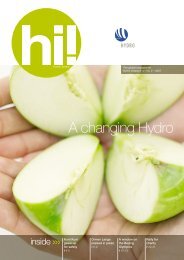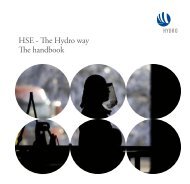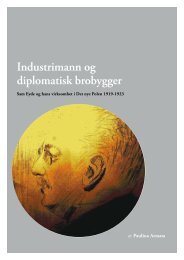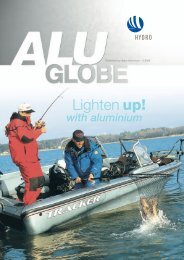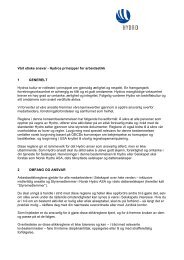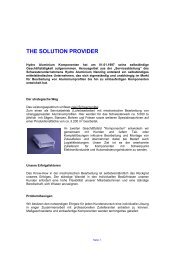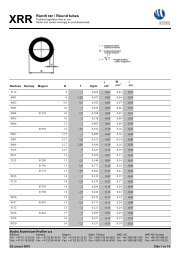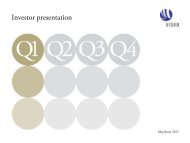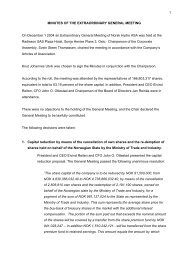Aluminium brazing
Aluminium brazing
Aluminium brazing
Create successful ePaper yourself
Turn your PDF publications into a flip-book with our unique Google optimized e-Paper software.
<strong>Aluminium</strong> <strong>brazing</strong><br />
Applications<br />
Brazed aluminium heat exchangers are<br />
largely utilised in modern automobiles<br />
for all major engine cooling and climate<br />
control systems – such as condensers,<br />
evaporators, radiators, oil coolers and<br />
charge air coolers. In addition, various heat<br />
exchangers are brazed for home appliances<br />
and industrial applications.<br />
Basics about <strong>brazing</strong><br />
Brazing is a thermal process for joining two<br />
pieces of metal or metal alloys.<br />
Brazing by definition takes place above<br />
450 °C.<br />
Industrial aluminium <strong>brazing</strong> allows joining<br />
of alloys having a melting temperature<br />
well above 600 °C with a low melting AlSi<br />
filler metal (7 to 13 wt.% Si), as shown<br />
schematically in fig. 1.<br />
• The filler metal starts to melt at about the<br />
(AlSi) eutectic temperature of 577 °C<br />
• The melting point of the base metal of<br />
the components is at least 30 to 40 °C<br />
higher than that of the filler metal, in<br />
order to assure that only the filler metal<br />
melts during the <strong>brazing</strong> process<br />
• The filler metal is normally placed<br />
between or adjacent to the component<br />
surfaces to be joined<br />
• The assembly is heated to a process temperature<br />
(e.g. 600 °C) at which the filler<br />
metal melts while the base metal of the<br />
components remains unmelted<br />
• The molten metal fills the gap by capillary<br />
action<br />
• Upon subsequent cooling, the filler alloy<br />
solidifies and forms a fillet / joint<br />
Fig. 2 illustrates a cross-section of a brazed<br />
aluminium joint.<br />
Brazing techniques<br />
The most common <strong>brazing</strong> methods for<br />
aluminium heat exchangers are:<br />
• Controlled atmosphere <strong>brazing</strong> (CAB)<br />
with non-corrosive flux<br />
• Vacuum <strong>brazing</strong> (VB)<br />
• Salt bath <strong>brazing</strong><br />
The CAB process became the most important<br />
of these during the nineties.<br />
Brazing cycle<br />
• The time-temperature cycle has to be<br />
carefully adjusted, because of its direct<br />
influence on the final products<br />
• The temperature in the furnace must be<br />
homogeneous to ensure that melting of<br />
the braze filler metal starts everywhere at<br />
the same time<br />
Fig. 3 shows a typical <strong>brazing</strong> cycle, and its<br />
steps, for aluminium <strong>brazing</strong>.<br />
Fig. 1<br />
Fig. 2<br />
Fig. 3<br />
Base metal<br />
Base metal<br />
Temperature<br />
Brazing temperature<br />
Heat penetration<br />
temperature<br />
Heat up time<br />
Filler<br />
metal<br />
(cladding)<br />
Heat<br />
penetration<br />
time<br />
Brazing time<br />
Resolidified<br />
filler metal<br />
(cladding)<br />
Brazing<br />
400 µm<br />
Dwell<br />
time<br />
Total time<br />
Fillet<br />
or<br />
joint<br />
Base metal<br />
Base metal<br />
Working temperature<br />
Time<br />
Cooling<br />
time
Contact:<br />
Günter K. Rybasch<br />
Hydro <strong>Aluminium</strong><br />
Precision Tubing Tønder a.s<br />
Hydrovej 6<br />
DK-6270 Tønder<br />
Denmark<br />
Tel: +45 7472 0304<br />
Mobile: +45 4017 2219<br />
Fax: +45 7472 3313<br />
E-mail: gunter.k.rybasch@hydro.com<br />
Kevin Hartley<br />
Hydro Ellay Enfield Ltd.<br />
Joseph Noble Rd.<br />
Workington<br />
Cumbria<br />
CA14 4JX UK<br />
United Kingdom<br />
Tel: +44 1900 601166<br />
Mobile: +44 07711 723078<br />
E-mail: kevin.hartley@hydro.com<br />
www.hydro.com/HVACR-service-center<br />
Bernd Gerdautzki<br />
Hydro <strong>Aluminium</strong> Rolled<br />
Products GmbH<br />
<strong>Aluminium</strong>strasse<br />
21129 Hamburg<br />
Germany<br />
Tel: +49 40 740-11747<br />
Fax: +49 40 740-2989<br />
Mobile: +49 170 2247885<br />
E-mail: bernd.gerdautzki@hydro.com



